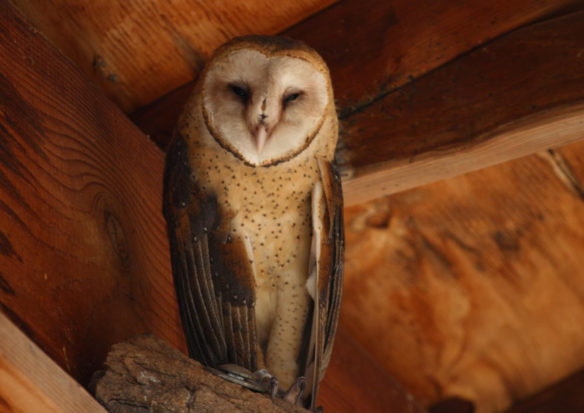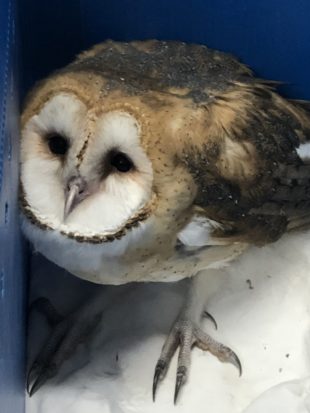
Some vintners have installed owl boxes to attract barn owls because they are known to assist with rodent control. Unfortunately, this practice attracts the owls to precisely the venue in which they can easily be poisoned by rodenticides. Photo by Kathleen McManus/The HSUS
The Humane Society of the United States has two affiliated wildlife centers that rescue and rehabilitate thousands of orphaned and injured animals each year. Holly Hazard, our senior vice president of programs and innovation, visits these facilities for discussions with their management teams about the state of wildlife rescue and rehabilitation, and about the current challenges facing those who work in this important area of direct care.
Recently, on a visit to the Fund for Animals Wildlife Center in Ramona, Calif., Holly found staff colleagues dealing with an unusual problem — an increase in the number of barn owls coming in with symptoms of poisoning. Today, on the blog, I’ve invited her to share her observations.
At the Fund of Animals Wildlife Center near San Diego, our staff treats and releases native California wildlife, including opossums, skunks, raptors, bobcats and bears. On a recent visit there, Christine Barton, director of operations at the wildlife center, told me about this season’s disturbing increase in barn owl poisoning intakes.
Barn owls are a predator species, native to California. Christine believes the burgeoning wine industry in San Diego County, which has doubled since 2010, may be the cause of the problem. Many vineyards, committed to traditional rodent control to protect their crops, use cruel and environmentally damaging rodenticides to poison rats and other animals foraging on grapes.
Newer poisons act slowly and owls have an opportunity to prey on the dying animals and then become poisoned themselves. Worse yet, they may bring their prey back to the nest and feed the poisonous rat, squirrel or gopher carcasses to their owlets. After eating the poison, the victim can suffer internal bleeding, which eventually leads to a slow, painful death. If the mother is the victim, the situation leaves the owlets behind as starving orphans.
Christine also worries that larger predators, like bobcats, coyotes and mountain lions, while not poisoned directly, are also eating the bodies of poisoned animals, and succumbing to mange and other ailments in increasing numbers.
Ironically, some vintners have installed owl boxes to attract barn owls because they are known to assist with rodent control. Unfortunately, this practice attracts the owls to precisely the venue in which they can easily be poisoned by rodenticides.
There are other vintners, however, warning of the negative impacts of rodenticides and promoting alternatives that could both protect crops and spare native wildlife. Ramona Ranch Vineyard and Winery, for instance, is working with the wildlife center to educate the public and other wineries on the successful and environmentally friendly pest-control options its managers successfully use at their vineyard. These options include owl boxes, beneficial bugs and snakes. There are many organic and biodynamic wineries that do not use pesticides.
I’m pleased to know that the wildlife center and other non-profits in California are working to sensitize wine growers to the indirect cost of using poisons. It’s a good example of the vital role that wildlife sanctuaries play in helping to identify and address inadvertent and unintended threats to animals. By detecting the nature and scope of such dangers, we can forge strategies to spare wild animals from harm.
The post Is your glass of wine poisoning wildlife? appeared first on A Humane Nation.
Enviroshop is maintained by dedicated NetSys Interactive Inc. owners & employees who generously contribute their time to maintenance & editing, web design, custom programming, & website hosting for Enviroshop.


